Post by Kozma Minin on Jun 14, 2008 11:50:54 GMT -5
This is my addition to Cole's, are you cheap as me.... series.
I want to scratch build a few box cars with scrap plastic I dig out of the garbage at work. I find the details on the ends and roof of the rail cars to be the most difficult to replicate by actually building and modeling them. I want to share a method I've used to mold and cast details for projects in the past, inexpensively.
The mold material is RTV Silicone Instant Gasket and is sold in a 40g (1.4 oz) tube. There are three formulas; Red Hi-Temp, Blue, and Black. One tube can make molds of both ends of two model box cars. Each tube is priced at $1.09 at the local household supplies store.
I sprayed the end and around the edge of the model (mold master) with an industrial mold release that I had. RTV Silicone generally doesn't stick to anything except itself, but I didn't want to take chances of it not pulling apart later.
My first attempt was applied incorrectly in one layer that was too thick.
This material requires no catalyst added to the formula, so it has to air cure.
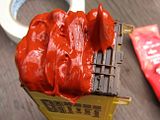
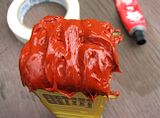
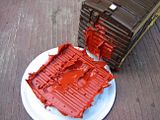
This didn't allow the center to cure properly and made a mess. I had to clean this off of the model, so meanwhile I started a new mold on the other end of the car.
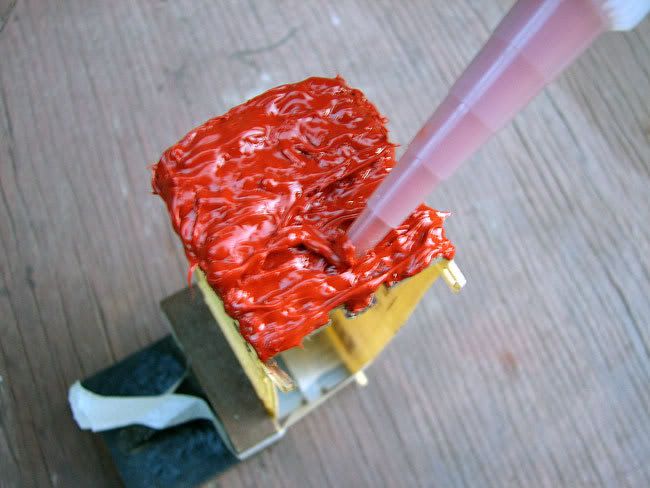
I applied three layers no thicker than 1/8 inch with 24 hours cure time before adding each layer.

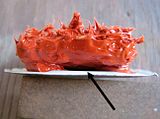
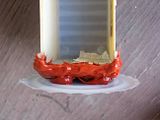
The final step was to add seven blobs spaced apart to glue on the sheet metal base that was cut from a can lid. This will create air space for the hot plastic casts.
Finished mold of one end.
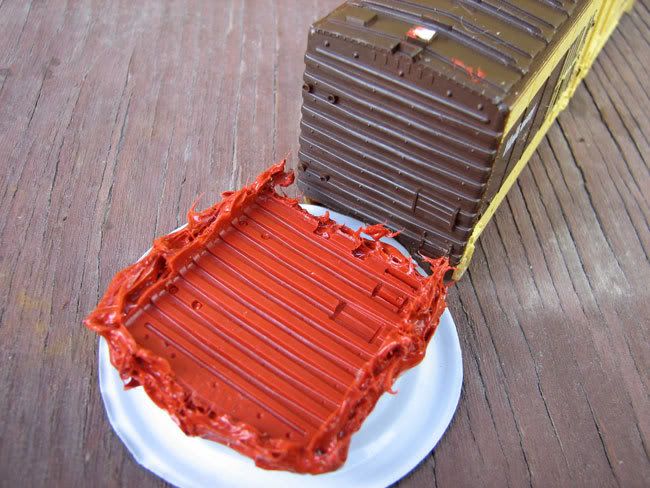
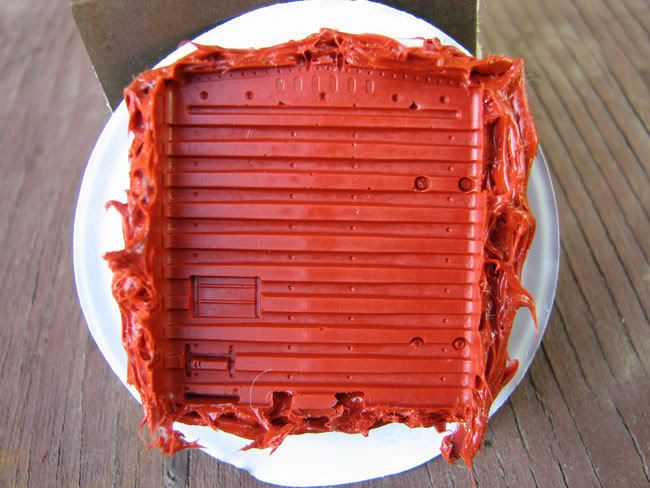
As you can see, it replicates all details. After cure, the consistancy of the mold is slightly softer than a Pink Pearl eraser.
I want to scratch build a few box cars with scrap plastic I dig out of the garbage at work. I find the details on the ends and roof of the rail cars to be the most difficult to replicate by actually building and modeling them. I want to share a method I've used to mold and cast details for projects in the past, inexpensively.
The mold material is RTV Silicone Instant Gasket and is sold in a 40g (1.4 oz) tube. There are three formulas; Red Hi-Temp, Blue, and Black. One tube can make molds of both ends of two model box cars. Each tube is priced at $1.09 at the local household supplies store.
I sprayed the end and around the edge of the model (mold master) with an industrial mold release that I had. RTV Silicone generally doesn't stick to anything except itself, but I didn't want to take chances of it not pulling apart later.
My first attempt was applied incorrectly in one layer that was too thick.
This material requires no catalyst added to the formula, so it has to air cure.
This didn't allow the center to cure properly and made a mess. I had to clean this off of the model, so meanwhile I started a new mold on the other end of the car.
I applied three layers no thicker than 1/8 inch with 24 hours cure time before adding each layer.
The final step was to add seven blobs spaced apart to glue on the sheet metal base that was cut from a can lid. This will create air space for the hot plastic casts.
Finished mold of one end.
As you can see, it replicates all details. After cure, the consistancy of the mold is slightly softer than a Pink Pearl eraser.

